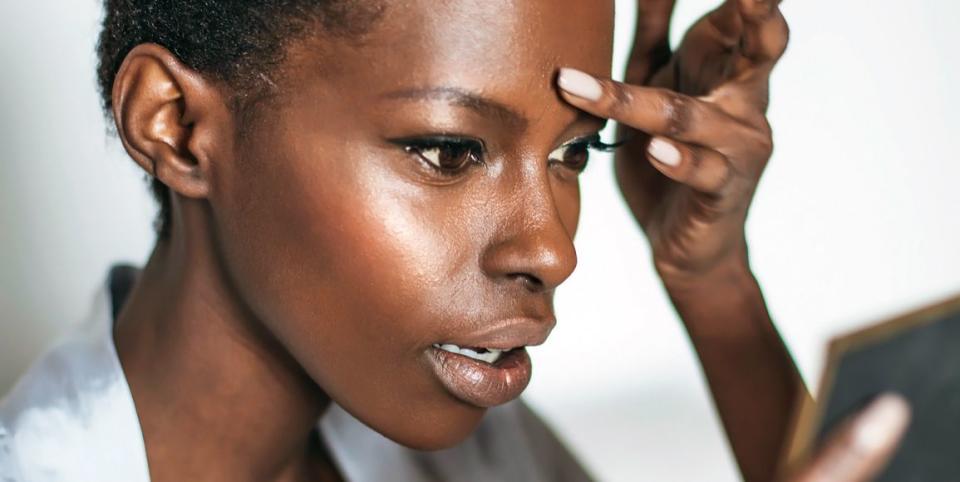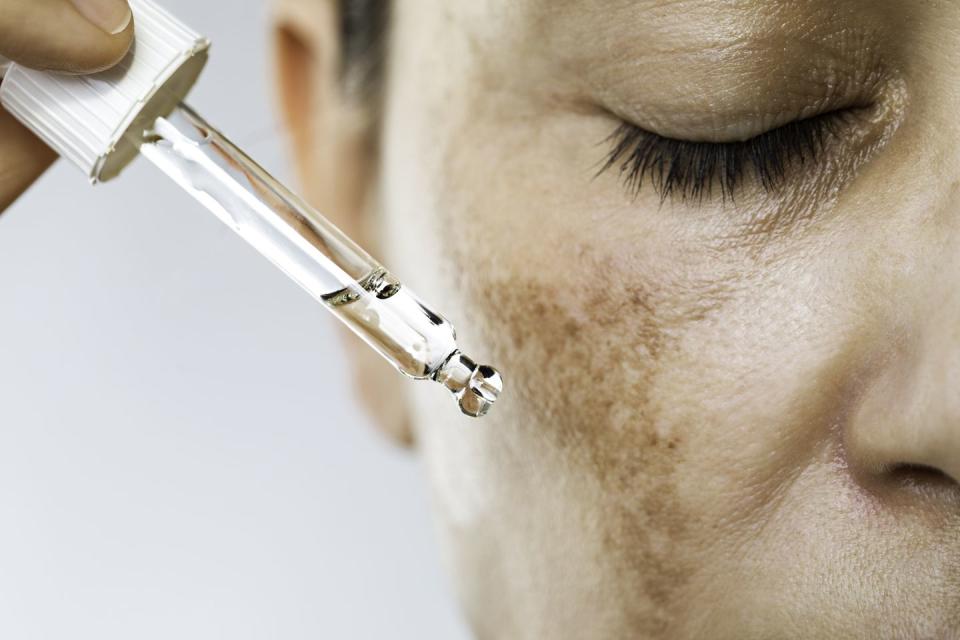What is melasma? We asked the experts everything you need to know and how to treat it

When it comes to skin conditions, melasma is a stubborn one to shake. Unlike a spot that might disappear from once it came in a week, melasma is around for the long haul. If you’re not familiar with this particular skin bugbear, it’s a condition that causes dark patches to appear – typically on the face – and can be down to a plethora of reasons.
Although melasma is typically associated with pregnancy – up to 50% of women are affected when pregnant according to the British Association of Dermatologists – it’s not the sole reason you can suffer from the skin condition (more on that later). The good news is that if you suffer from melasma, you are not alone.
While the condition lingers like a toxic ex and will never completely vanish, there are an array of treatments out there to help manage melasma and help disguise its tell-tale patches of discoloration.
Here’s the low-down on everything you need to know about melasma…

What is melasma?
Let’s start from the beginning. “Melasma is one of the forms of hyperpigmentation defined as “Dark brown to grey-brown, symmetric patches of pigment on the face,” explains dermatologist, Dr Tiina Meder.
What it looks like can vary depending on your skin tone. But in general, Dr Meder says “melasma appears as a dark spot on the face. These can be large or small, can have regular or irregular form, are mostly symmetrical and differ in colour depending on skin tone and intensity of pigmentation,”.
If you’ve dealt with pigmentation before, this might look eerily familiar, however, there is a difference between melasma and pigmentation. “All melasma cases could be called “dyspigmentation” but not all dyspigmentation (or pigmentation as it is called traditionally) are melasma. Melasma is one of the most common types of (dys)pigmentation,” explains Dr Meder.
What causes melasma?
You’ve probably heard it dubbed “the pregnancy mask”, but melasma can occur for a range of reasons.
To put it simply, “any factors able to stimulate synthesis of melanin in the human skin could cause melasma,” explains Dr Meder. She breaks down the other key factors in the melasma-causing game:
Melanin synthesis: This is a complex process happening in the skin, but influenced by the nervous system and directed by hormones.
Ultraviolet radiation: visible light and infra-red radiation could trigger pigmentation too, under specific circumstances.
Hormonal changes: such as pregnancy, breastfeeding, menopause, hormonal treatment, medical conditions involving endocrine system (aka, the glands that release hormones into the blood) and stress.
Trauma to the skin: this causes inflammation, including aesthetic treatment such as laser resurfacing or surgery.
Melasma is more apparent in women, compared with men, and often occurs “in older age and almost never happens in the childhood or young age, except for post-inflammatory pigmentation,” says Dr Meder.
We may be used to seeing melasma on paler skin tones, but it can affect all skin types and tones. “Some skin types are linked to higher risk because of the anatomy of the skin and specific physiology of pigmentation,” says Meder. “People with an Asian skin genotype are in a higher risk zone which can be higher or lower genetically. Whereas those with darker skin have higher risk for pigmentation and Caucasian type is at the lower risk, despite existing stereotypes.”
Is melasma dangerous?
Just like with most skincare conditions out there – acne and eczema come to mind – melasma is not necessarily dangerous to your health or wellbeing, but it can have an impact on your mental health.
If you are struggling, always make consulting your doctor your first port of call.
What treatments help with melasma?
It’s not all gloom and doom and don’t you worry, we’re here with the solutions.
“If you’re going to be serious about clearing it there really is the best option of having a medical treatment called hydroquinone,” believes consultant dermatologist, Dr Emma Craythorne. Hydroquinone is a de-pigmentation or skin lightening agent that usually comes in a cream format if prescripted.
A topical prescription of the ‘it’ ingredient of the moment, tretinoin, might also be one to look into and is often used to treat acne and fine lines. “Tretinoin can be a bit irritating on the skin, so it’s important to try and avoid inflammation with a good moisturiser to support the skin barrier,” advises Dr Craythorne.
Basically, get to your dermatologist ASAP.
How to treat melasma at home
If you don’t want to trek to your Derms office, there are also some over the counter fixes you can add to your skincare routine.
“Melasma is a diagnosis that has very effective medical treatments in order to get clearance but it also needs to have a very strict skincare routine to protect you from any ultraviolet radiation and oxidative stress,” says Dr Craythorne.
As always, there’s some important ingredients in your skincare to look out for. “Cosmeceuticals can be helpful, but not as good as the medical treatments. These are vitamin C, liquorice, silymarin and soya all have shown some benefit,” says Dr Craythorne.
You Might Also Like

